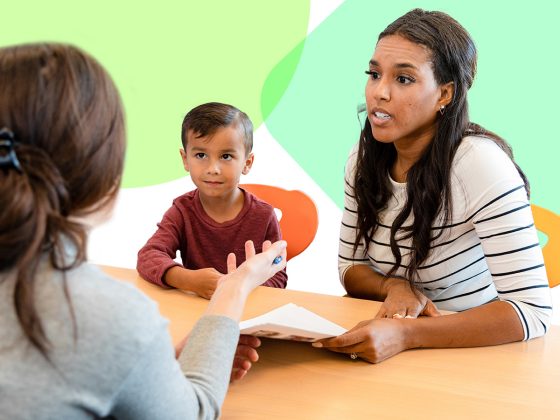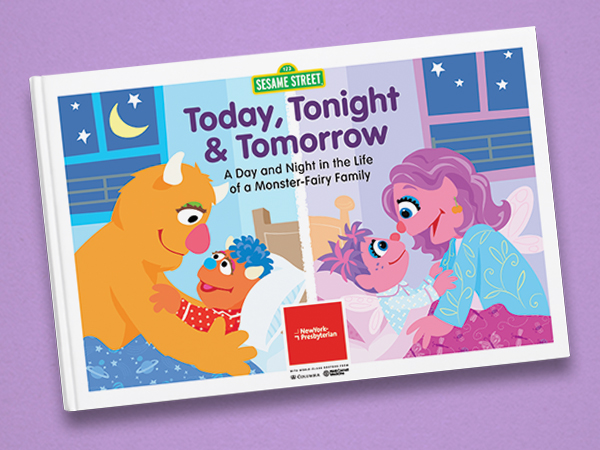
Making Healthy Choices Around Digital Media: A Conversation with Vikki Katz, Ph.D.
Learn strategies for making good choices for your family's digital well-being from expert Vikki Katz, Ph.D.
So many factors go into deciding what digital well-being looks like for your own family. We asked an expert for specific strategies for making healthy choices.
What’s the most important thing for parents to keep in mind when making choices about how their children and family use media?
Remember that these are, indeed, choices — and choices are not always easy to make! Just as when we’re trying to eat healthier, it can be overwhelming to say, “I’m always going to choose to eat the healthy thing.” There are times when we really would like a piece of chocolate, and choosing it doesn’t mean that our whole healthy eating plan is off the rails.
A healthy media diet is similar. Sometimes we make choices that are less “nutritious” than others. Just as Cookie Monster would say that cookies are “sometimes foods,” you can explain to your children that some media choices are “sometimes choices” too. As parents, if we don’t make “the right choice,” we shouldn’t beat ourselves up about it or think it’s not worth trying to do better. Just like any wellness plan, we can see it as a set of lifestyle changes, not one dramatic shift.
Comparing media use to what we eat is a great way to think about this topic. So if we’re talking about what media children interact with, what might guide parents’ choices?
One challenge for parents today is that every media choice must be made individually, reflecting and honoring differences in each child’s age, preferences, and temperament. Planning in advance goes a long way! Common Sense Media is a great place to read descriptions of available entertainment and technology for every age and stage. You can choose higher-quality apps, shows, and content, and install only those options on your child’s devices. That way, you have a safe “walled garden,” and you don’t have to choose again and again.
Another decision parents make is about where children use media. What are some things parents should keep in mind?
It’s best to not have television and other screen media in the bedroom. The light from the screens impacts the amount and the quality of sleep children get, the time spent engaged reduces sleep time, and parents aren’t always there to oversee what children are watching. It’s also best to charge all devices somewhere other than the bedroom.
Keeping shared devices in shared spaces can also encourage siblings to play and learn together. This also gives parents more opportunities to watch media together with children and oversee what children are doing.
And then there’s the question of how much. What’s a helpful way to think about the amount of time children spend on media?*
We can focus less on the amount of time children spend with media, and instead ask: what might children be missing out on when they’re using media? We don’t want media to crowd out the other experiences, connections, and relationships that help children grow. It’s actually beneficial for children to be bored sometimes, and helpful for them to know the feeling of being fully present somewhere. And no matter your child’s age, every day needs time to run around and wiggle!
In the busy lives of families, media time often happens when parents need to get things done. But perhaps there are times where, instead of a child playing alone, they can play with a sibling or friend and build social skills like turn-taking.
The American Academy of Pediatrics recommends limiting screen time to a maximum of two hours a day (for children over two).
What’s important to consider about when to use digital media, and when not to?.
There’s an important distinction between rare and routine moments. For rare occurrences like a long flight or a sick day, a little more screen time isn’t such a problem, though content still matters when making choices that are best for your child. But when media use routinely crowds out everyday experiences that matter, it can be more of a problem.
For example, shared dinner table time is very powerful. It might be the only time families sit down together to talk about their day. Children notice the way adults talk to each other and solve problems together. And screen-free mealtime helps children become mindful eaters (while using a screen, they’re less likely to be tuned in to their body cues of feeling full).
Any final thoughts?
One thing that makes it difficult to manage choices around media practices is that to be effective, it’s not “do as I say,” it’s “do as I do.” We have to show children that we, as adults, are capable of disconnecting for times and experiences that matter to us. I think that’s our biggest challenge, but we can choose to resolve it in many creative ways! And, of course, we can let children see us enjoying our connections to one other… uninterrupted by media use.
*Check out The American Academy of Pediatrics’ “5 C’s questions for parents of toddlers & preschool-age children”
Vikki Katz, PhD is a Professor and the Fletcher Jones Endowed Chair in Free Speech at Chapman University in Orange, CA. Her research examines how children and parents learn about, and with, technology in lower-income, working-class, and immigrant families in the U.S. Her digital inequality research has informed policy efforts to ensure that all families have the digital tools they need to thrive. She also serves as an Advisor to PBSkids.com and CPB-PBS on content development for Ready to Learn, and as Editor of Journal of Children and Media. Previously, she was a professor at Rutgers University-New Brunswick, and she has been a Visiting Scholar at the Russell Sage Foundation and a Senior Research Fellow at the Joan Ganz Cooney Center at Sesame Workshop.

Episode 5 - Ask an Expert: Switching It Up
In episode five of this six-part series, explore strategies to support families in building flexibility and navigating transitions.

Watch and Play: Abby's Magical Beasties
Watch this episode and explore ways to extend the learning at home.

Using Your Words
A coloring page helping children explore words for big feelings.

Noticing and Choosing
Learn about the three steps Elmo takes to transition away from screen time.

6 Ways to Practice Nurturing Parenting
Tips from a pediatrician on understanding, empathizing with, encouraging, and positively guiding children.

Today, Tonight, and Tomorrow
It takes a special kind of patience to handle children’s middle-of-the-night wakeups! Read about how a Monster-Fairy family manages it.

Switch It! Routine
Watch Julia, Sam, and their dad, Daniel, practice their family’s Switch It! Strategy, to transition out of screen time.
